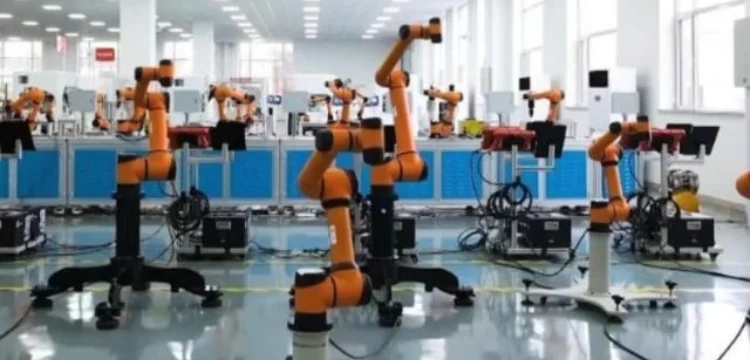The article highlights China’s significant advancements and leadership in the field of industrial robotics, driven by robust technological innovation and strategic market expansion efforts.
- Technological Advancements: China, particularly exemplified by companies like Weichai Power Co., Ltd., has embraced industrial robots extensively in manufacturing. The automation rate at Weichai’s factories reaches 99%, significantly reducing dependency on manual labor and enhancing production efficiency. This shift has enabled faster adjustments in production lines and accelerated product development cycles.
- Market Dominance and Growth: China’s dominance in the global industrial robot market is substantial, with the country accounting for over 50% of the world’s installed capacity of industrial robots. In 2022, China produced over 443,000 industrial robots, demonstrating a 20% year-on-year increase. The rapid growth underscores China’s commitment to integrating robotics into various sectors to boost productivity and innovation.
- Diverse Applications: Chinese robotics firms, such as FAIR Innovation and Uroica Precision Information Engineering, are diversifying their robot offerings across welding, spraying, precision processing, and even specialized fields like mine inspection and logistics. This diversification aims to make robots more versatile, capable of performing a wide range of tasks across different industrial scenarios.
- Global Market Expansion: Chinese robotics companies are actively expanding into international markets, including regions with aging populations and high labor costs like the United States, Europe, and Japan. This expansion leverages China’s technological expertise and competitive pricing to meet global demand for automation solutions.
- Future Prospects: The future of Chinese robotics appears promising, with ongoing efforts to develop “generalist” robots capable of handling diverse tasks in open environments. This evolution aims to broaden the application scope of robotics beyond specialized tasks, potentially revolutionizing industries such as rescue operations, autonomous driving, modern agriculture, and home services.
In summary, China’s industrial robotics sector is not only thriving domestically but also making significant strides globally, shaping the future of automation and manufacturing worldwide.











